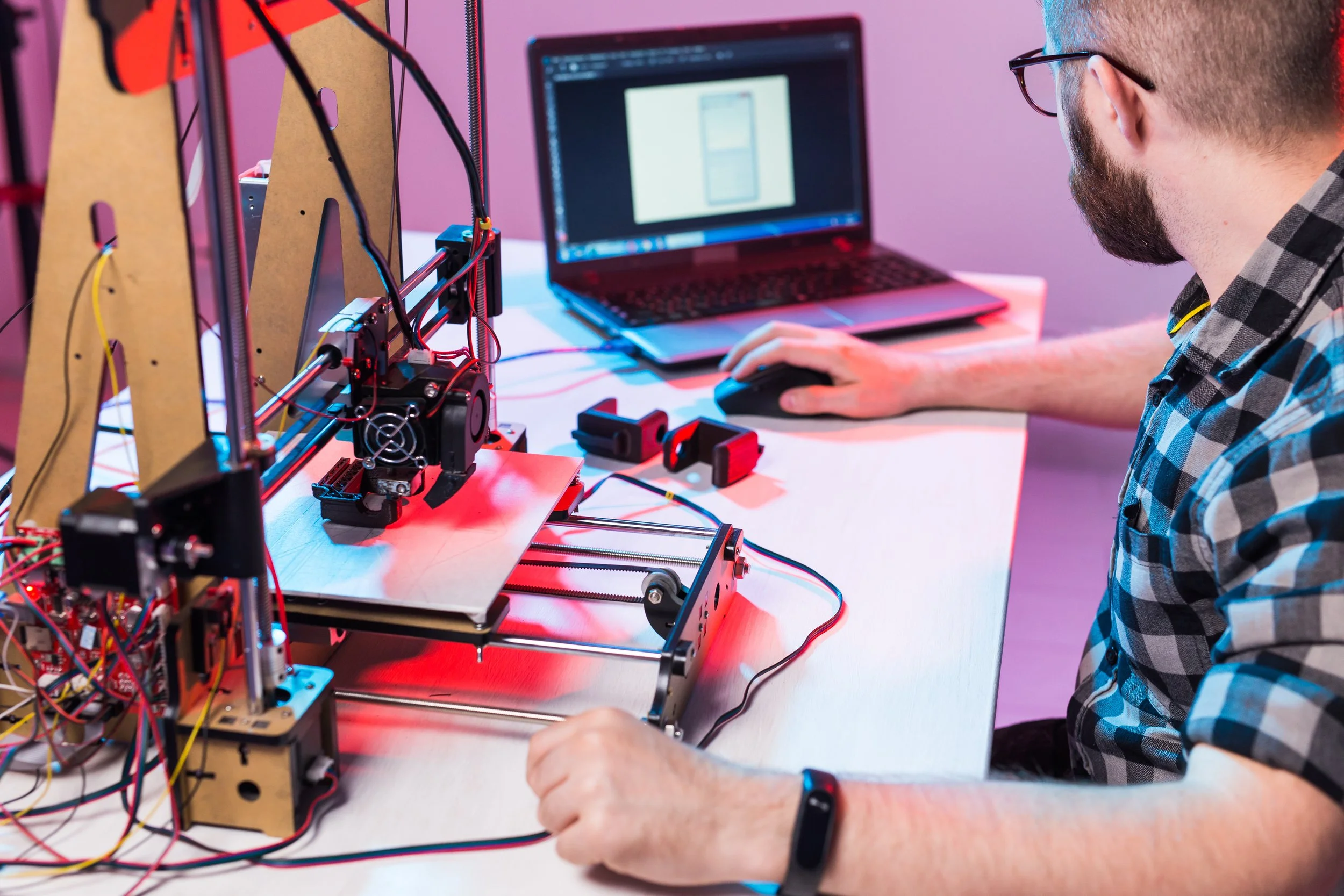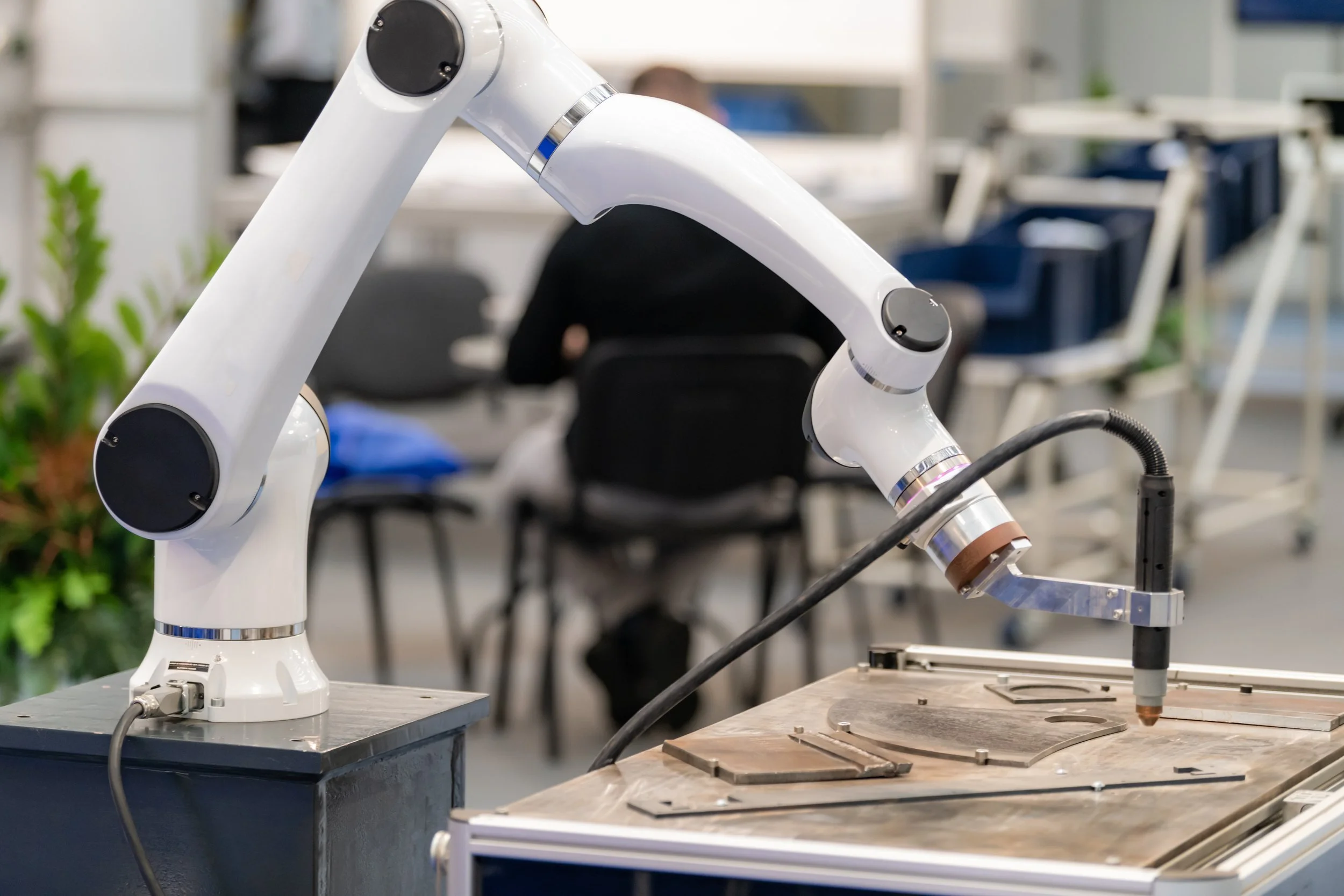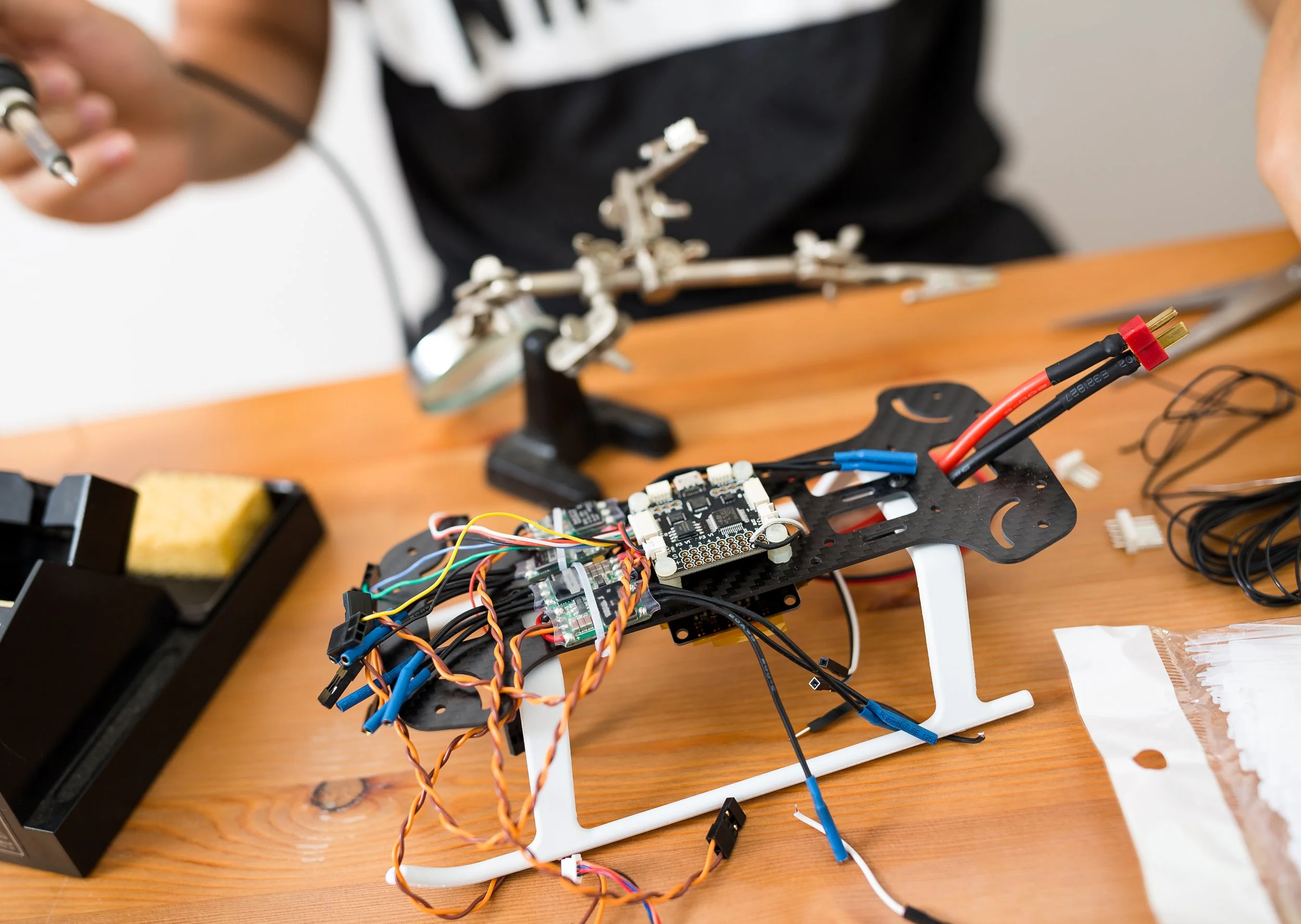Our Research
-
Drone and UAV Research
Autonomy and Artificial Intelligence (AI):
Researchers are integrating AI to improve autonomous navigation, obstacle avoidance, and decision-making. This includes the use of machine learning for real-time data processing, such as object detection and path planning.
Efforts are underway to develop energy-efficient AI systems to extend flight times, a critical limitation for small UAVs.
Design and Stabilization:
Advances in UAV design focus on lightweight materials, aerodynamic efficiency, and stability for low-altitude flights. For example, fixed-wing and multi-rotor designs are being optimized for specific tasks like crop surveillance or long-range mapping.
Stabilization research, such as developing robust control systems (e.g., PID or LQR controllers), ensures high-quality data collection, especially for applications requiring precise imaging.
Applications:
Agriculture: UAVs are used for precision farming, including health assessment, pest monitoring, and yield estimation. Research explores multispectral imaging and sensor integration for better crop management.
Defense: Military research focuses on combat UAVs (UCAVs), drone swarms, and counter-UAV technologies, like missile-equipped drones to neutralize enemy UAVs.
Environmental Monitoring: Drones are employed to track climate change, wildlife, and pollution, with innovations like sensor-equipped UAVs for remote data collection.
Public Health: Research investigates drones as medical couriers, delivering blood, vaccines, or organs to remote areas, addressing logistical challenges in disaster relief.
Swarm Technology:
Multi-UAV coordination is a growing field, enabling large-scale surveillance or search-and-rescue missions. Research tackles communication protocols, collision avoidance, and task allocation within swarms.
Power and Endurance:
Battery life remains a bottleneck. Studies explore solar power, hydrogen fuel cells, and energy-efficient propulsion to extend flight duration, especially for long-range missions like NASA’s Dragonfly project targeting Saturn’s moon Titan.
Counter-UAV Systems:
With the rise in unauthorized drone use, research into detection (radar, RF, acoustic) and neutralization (e.g., AI-controlled interceptors) is accelerating. Concepts like Airbus’s missile-slinging drones highlight this trend.
Regulatory and Ethical Frameworks:
Research also addresses privacy, airspace management, and safety concerns. Low Altitude Airspace Management (LAAM) systems are being studied to integrate UAVs into urban environments responsibly.
Notable Examples and Trends
Space Exploration: NASA’s Ingenuity helicopter (Mars, 2021–2024) and the upcoming Dragonfly mission (launch planned for 2027) showcase UAVs in extraterrestrial research.
Miniaturization: Small, insect-like drones, such as MIT’s lightweight "bug-bots," aim to revolutionize tasks like pollination with extended flight capabilities.
Challenges
Technical: Limited payload capacity, battery endurance, and resilience to environmental factors like wind or interference.

-
Robotic Research
Autonomy and AI:
Research is heavily focused on making robots smarter through machine learning, computer vision, and natural language processing. This includes reinforcement learning for navigation (e.g., robots learning to avoid obstacles) and generative AI for task planning.
Example: Autonomous drones (like those you asked about) rely on similar AI to map environments or deliver packages without human input.
Hardware Innovations:
Actuators and Materials: Advances in soft robotics use flexible materials (e.g., silicone-based actuators) for tasks requiring delicate manipulation, like medical surgery or fruit picking.
Microcontrollers and SBCs: Platforms like Arduino and Raspberry Pi (from your previous question) are staples in prototyping. Arduino drives simple motor control, while Pi powers complex vision systems in research labs.
Miniaturization: Insect-sized robots, such as Harvard’s RoboBee, push boundaries in microrobotics for applications like pollination or search-and-rescue.
Human-Robot Interaction (HRI):
Studies explore how robots communicate with humans via gestures, speech, or haptics. Think of collaborative robots (cobots) in factories that work alongside people safely.
Research also delves into social robots—like companions for the elderly—using emotional recognition tech.
Swarm Robotics:
Inspired by nature (e.g., ant colonies), swarm research develops groups of small, simple robots that coordinate to solve big problems. This ties into UAV swarms for surveillance or disaster response.
Challenges include decentralized control and robust communication protocols.
Applications:
Healthcare: Surgical robots (e.g., Da Vinci system) evolve with finer precision, while exoskeletons aid rehabilitation.
Industry: Automation research enhances robotic arms for manufacturing, with a focus on adaptability to varied tasks.
Space: NASA’s rovers (e.g., Perseverance) and upcoming robotic explorers like lunar payload delivery systems push extraterrestrial robotics.
Defense: Autonomous combat robots and bomb-disposal units are active research areas, often overlapping with UAV tech.
Power and Mobility:
Energy-efficient designs (e.g., battery optimization, solar-powered bots) extend operational time, critical for field robots like drones or rovers.
Legged robots (e.g., Boston Dynamics’ Spot) improve locomotion over uneven terrain, while wheeled and tracked designs dominate industrial settings.
Bio-Inspired Robotics:
Mimicking biology—like gecko-inspired adhesives for climbing robots or fish-like swimmers for underwater exploration—drives innovation in adaptability and efficiency.
Future Directions
More autonomous, adaptable robots for unstructured environments (e.g., homes, forests).
Greater synergy with AI for predictive maintenance and decision-making.

-
Arduino and Raspberry pi prototypes
Arduino Projects
Drone Flight Controller (Basic)
What it does: Stabilizes a simple quadcopter frame using sensor data.
Components: Arduino Nano, MPU-6050 (gyroscope/accelerometer), four brushless motors, ESCs (Electronic Speed Controllers).
How it works: The MPU-6050 feeds orientation data to the Arduino, which adjusts motor speeds for balance.
Why it’s cool: Links to your UAV interest—start small before scaling to full drone builds.
Note: Requires tuning (e.g., PID control) and safety precautions.
Weather Station
What it does: Measures temperature, humidity, and pressure, displaying data on an LCD.
Components: Arduino Uno, DHT11 (temp/humidity sensor), BMP180 (pressure), 16x2 LCD.
How it works: Sensors send data to Arduino, which outputs readings to the LCD.
Why it’s cool: Expandable—add a Pi later for web logging or tie it to a drone for aerial data.
Line-Following Car
What it does: A car that follows a black line on a white surface.
Components: Arduino Uno, IR sensors (e.g., TCRT5000), DC motors, motor driver, chassis.
How it works: IR sensors detect the line; Arduino adjusts motor speeds to stay on track.
Advanced Projects
Robotic Arm
What it does: A 4- or 5-axis arm that picks and places objects.
Components: Arduino Mega, servo motors (e.g., MG996R), joystick module or potentiometers, 3D-printed arm parts.
How it works: Joystick inputs control servo angles via Arduino; add sensors for automation.
Why it’s cool: Hands-on robotics experience, scalable to industrial or drone-mounted applications.
Home Automation Hub
What it does: Controls lights, fans, or appliances via phone or sensors.
Components: Arduino Uno, HC-05 Bluetooth module, relays, sensors (e.g., PIR for motion).
Why it’s cool: Practical IoT project—pair with a Pi for Wi-Fi or voice control.
Gesture-Controlled Bot
What it does: A robot that moves based on hand gestures.
Components: Arduino Nano, ADXL345 accelerometer (or MPU-6050), RF transmitter/receiver, motors.
How it works: Wearable accelerometer sends tilt data wirelessly; Arduino on the bot interprets it to move.
Why it’s cool: Explores wireless comms and human-robot interaction.

